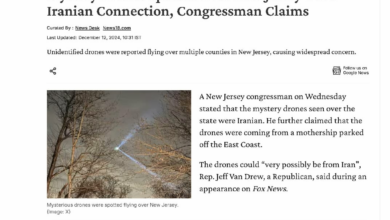AARO Clarifies Status of 510 UAP Reports: Only Four Resolved, None Involving Weather Balloons

Confusion Surrounds AARO’s UFO Investigations: Wikipedia vs. Official Reports
The All-domain Anomaly Resolution Office (AARO) has generated quite a buzz since its establishment in 2022, with its ambitious goal of investigating unidentified aerial phenomena (UAP). However, recent discrepancies between Wikipedia entries and official reports have raised eyebrows, leading many to question the accuracy of information being disseminated online.
According to Wikipedia’s article on the AARO, the office has initiated hundreds of investigations and claims that approximately half of these cases have been resolved with “mundane explanations,” such as weather balloons. The other half, they report, remain unexplained due to insufficient data. This summary primarily references the Office of the Director of National Intelligence (ODNI) 2022 UAP report and an article from Live Science that summarizes these findings.
While it’s understandable that Wikipedia editors might lean on secondary sources like the Live Science piece, some errors have emerged that warrant scrutiny. The Live Science article reports that of the 366 new cases opened by AARO, 195 were "initially resolved" with more ordinary explanations, distinguishing between drones, balloon-like entities, and airborne clutter such as birds or plastic bags.
Yet, the language in the actual ODNI report tells a more nuanced story. The report specifically states that AARO’s analysis categorized over half of the 366 newly identified cases as having “unremarkable characteristics,” specifying numbers attributed to drones, balloons, and other clutter. Importantly, the report clarifies: “Initial characterization does not mean positively resolved or unidentified.” This points to a significant distinction—the AARO’s assessment was not about resolution but rather about characterizing the observed phenomena.
Digging deeper into the ODNI report, it becomes evident that the office aims to efficiently allocate resources to the remaining 171 cases that have not been characterized. Some of these unidentified UAPs display unusual flight characteristics, indicating a need for further study.
Wikipedia does touch upon this detail but does so in a way that can lead readers to misinterpret the AARO’s findings as definitive resolutions. According to the report, “initial characterization does not mean positively resolved or unidentified,” yet the language used in the Wikipedia entry could easily mislead readers into thinking that half of the cases were conclusively resolved.
In an era where information is easily shared and consumed, this confusion underscores the importance of verifying facts, especially on platforms like Wikipedia. As of now, the AARO only recognizes four cases as resolved, including one that was identified as a “commercial LTA lighting system” balloon.
For those interested in exploring the resolved cases, AARO provides a comprehensive list on their official website, available here.
As the discussion around UAPs continues to evolve, maintaining clarity in reporting and updates from reputable sources will be crucial for public understanding. So the next time you read about AARO’s findings, make sure to check the original reports to get the full picture!




